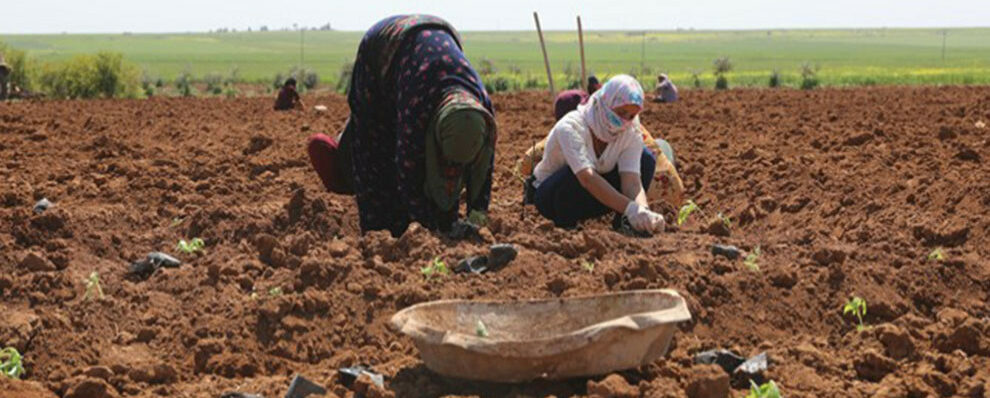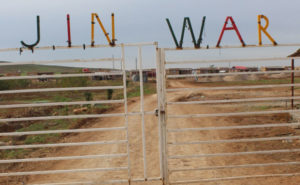Residents of the women’s village Jinwar protect themselves from Covid-19 with their own system of autonomy and self-sufficiency.
The women’s village Jinwar in Rojava protects itself against the Covid-19 pandemic on several levels. On the one hand, classic measures such as restricting entry and exit are implemented, while on the other hand the autonomous model of self-organisation and self-sufficiency helps to protect against the pandemic.
As in many places in Rojava, visitors to the women’s village must wear gloves and masks. Jinwar, however, has other options in the fight against the pandemic. The village is self-sufficient, with food like bread and vegetables from its own production. The women produce everything themselves, even the clothes they wear.

Many people from the surrounding villages come to the health centre of Jinwar. However, treatment is carried out under precautions to prevent infection. Hena Silêman of the Jinwar Health Centre explains that people do not have to leave the village because of the autonomous organisation of the economy and that this is an important advantage in the fight against the pandemic. Measures have also been taken in the village. Women who leave the house wear gloves and masks. They attach increased importance to disinfection and hygiene. The residents keep their distance from each other and do not assemble during this process. Distance is also taken into account during agricultural work.

The women’s village Jinwar is located in the west of Dirbêsiyê in the canton of Hesekê. The planning of the project started in 2016, the opening ceremony took place on 25 November 2018. The village is inhabited by women of different origins. Besides Yazidi, Christian, Muslim, Kurdish, Syriac and Arab women, women from all over the world take part in the village life.
The village consists of 30 houses of various sizes, a school, an academy, a health centre, a communal kitchen, a play area for children, a small shop, a stable, two swimming pools, a depot, a garden with 1,400 trees and a village square.



